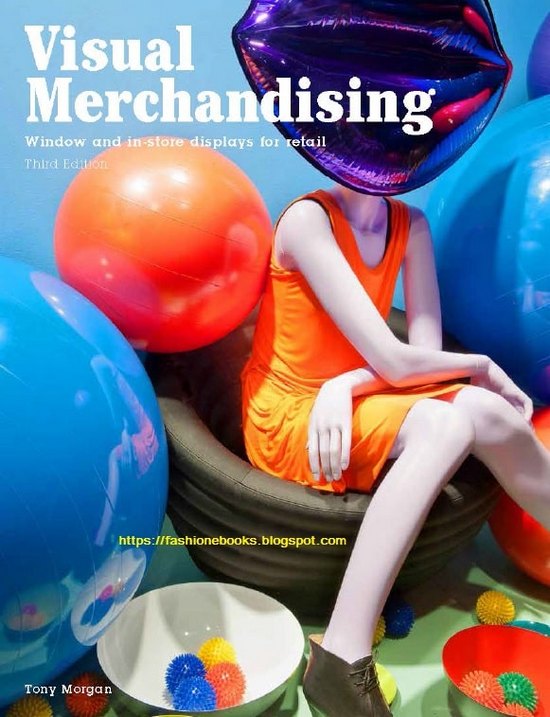by Tony Morgan

Contents
6 Preface
8 The History of Visual Merchandising
18 The Role of a Visual Merchandiser
21 The day-to-day role of a visual merchandiser
22 Training
23 Visual merchandising in a department store
26 Visual merchandising of multiple chain stores
28 Visual merchandising of small retail outlets
29 Measuring success
30 Store Design
32 What is store design?
33 Why is store design important?
34 Who designs the store?
37 Pop-up shops
40 How does store design work?
42 Store study: Kurt Geiger
46 Windows
50 Getting to know your windows
56 Planning a window display
60 Themes and schemes
67 Budgeting
68 Props
74 Designing a window display
80 Store study:
Au Printemps
84 Colour
90 Window prepping
92 Installing the window display
96 Store study: Louis Vuitton
98 Lighting
100 Signage and graphics
106 Window calendar
110 Window standards and maintenance, and budget
112 Store study: Fortnum & Mason
116 In-store Visual Merchandising
120 Product adjacencies
122 Floor layouts
130 Store study: Matthew Williamson
134 Fixtures and fi ttings
146 Wall fi xtures
150 Product handling
156 Store study: Flight 001
162 In-store displays and hot shops
166 Point of sale and add-on sales
168 Clearance merchandise
169 Signage and ticketing
170 Case study: Colorset
179 Lighting
180 Case study: ERCO lighting
184 Ambience
186 Technology
190 Retail standards and maintenance, and budget
191 Virtual visual merchandising
194 Store study: Topshop
198 Mannequins
202 Sculpting
204 Purchasing mannequins
206 Dressing a mannequin
211 Securing a mannequin
212 Grouping mannequins
213 Maintenance
214 The Visual Merchandiser’s Studio
217 The visual merchandiser’s toolbox
218 Health and safety
219 Lighting chart
220 Glossary
221 Further reading
222 Index
224 Picture credits and Acknowledgements
Preface
If you have ever stood outside a shop admiring the artistry of the window display, been distracted by a sale item while passing through a department store, or paused to take in information from a store guide, then you have been sidetracked by visual merchandising. If you purchased something as a result of stopping in your progress along the pavement or through a store, then you have succumbed to its supremacy.
For years, the creative individuals who made the stores of the world look appealing for retailers and their loyal customers were known as window dressers or display artists. Display teams had a unique and much-envied function in a store. Occasionally with generous budgets – and most definitely with a huge amount of talent – they mysteriously locked themselves away in studios or lurked behind the curtains of the windows and produced stunning, eye-catching works of art for the shopping community to admire.
During the 1980s, possibly because of a global recession and the threat of e-commerce from the Internet, store bosses suddenly questioned the quantities and abilities of these non-profit-making departments. As a result, they began to push the display artists in-store to cast a creative eye over the racks and rails of discounted merchandise; thus the visual merchandiser was born. Rarely taken seriously at first because their new roles were unexplained, visual merchandisers were soon laying out departments complete with “sightlines”, “focal points” and “hot shops”. A new retail vocabulary was born, and soon store interiors had as much sparkle as their windows. Today, visual merchandisers command respect, and are a much sought after commodity in the retail world as they provide not only a service, but also inspiration and commerciality. This book aims to enlighten and educate students and retailers in the workings of the world of the visual merchandiser. It covers both the art of the window display and in-store visual merchandising and looks at the tools that will help any would-be visual merchandiser succeed.
By using case studies and specially commissioned illustrative diagrams, together with images of the best in window display and in-store interiors from around the world, this book aims to prove how effective visual merchandising can improve a store’s brand image and inspire customers to spend.
